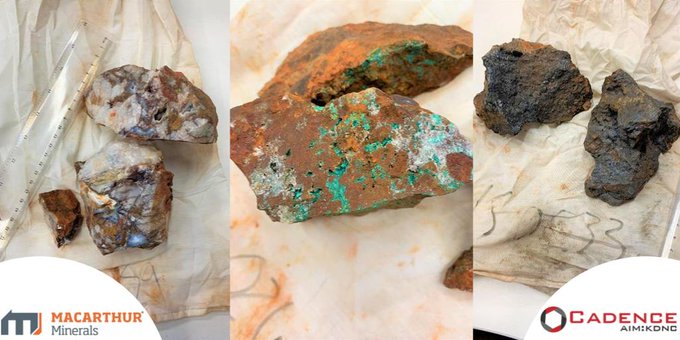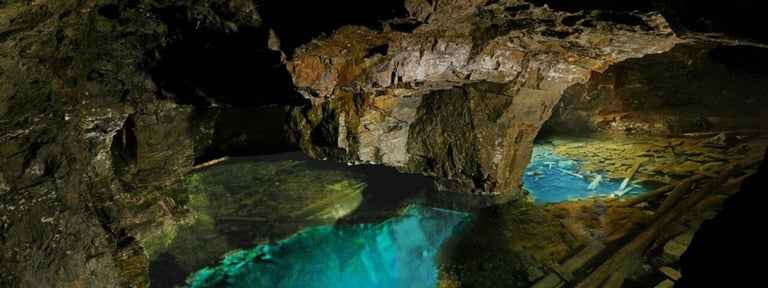Cadence Minerals plc (LON:KDNC) Chief Executive Officer Kiran Morzaria caught up with DirectorsTalk for an exclusive interview to discuss the completion of phase one of their investment in the Amapá Iron Ore mine, plans for phase two and other significant developments.
Q1: First off, congratulations on closing the first phase of Cadence Minerals’ investment into the Amapá Iron Ore mine. Can you just explain for us though what did it entail and what can you tell us about the estimated value?
A1: What we’ve been talking about and I’ve mentioned previously is to vest our first 20%, what was needed was a series of preconditions which were achieve actually in 2019 and the biggest gap that was outstanding was the settlement with the bank creditors because we’ve taken this old mine that went into restructure, or judicial reorganisation, equivalent of chapter 11, and we’ve taken it out for the legal process. One part of that was there was a set of secured credit, these secure creditors were institutional banks, both in India and Italy and they had an outstanding debt which at the time was $135 million. So, for us to vest our initial 20%, we needed to reach a settlement with the bank creditors and then our $2.5 million that’s been sitting in escrow since June 2020 will be released as part of that settlement.
So, we achieved the settlement in the end of last year, 24th of December and we announced on 29th. What I said then was that there is still some bits and pieces to do which are formality, I think my analogy was that it was effectively like you bought your car and now you can file the v5 at the DVLA. So there’ no risk, it was a done and dusted deal, it was just that this was an announcement saying all of outstanding documents being filed and completed have been done and the shareholding is vested 100% into our joint venture company and we got our 20% of that joint venture company. We now have 20% of the Amapá Iron Ore mine which includes the mine, railway and port.
You talk about the value, well, of course, what we’re doing right now is a prefeasibility study, that prefeasibility study determines the engineering accuracy and the cost accuracy to around 25% on a capital and operating basis. Once we have this completed, we’ll announce that to the market and that will provide a net present value in relation to the assets’ mine life and the capital and operating expenditure. We obviously have some ideas of that CapEx and OPEX from our scoping study level studies, which have about a 50% accuracy but that really defines it.
Now, if you’re talking about the valuation of it, I think the best place to look and it’s the most recent valuation, it’s quite old, it’s 2012 when Anglo American had a written down value of the book asset, on 100% basis, of around $660 million. So, we’re talking about, initially, to get to 27%, $6 million, of an asset that was worth £600 million. So, there’s plenty of potential uplift, assuming that it gets into production.
Q2: So, as part of the second investment phase, you’ve recently announced a very successful fundraise. How did that go and what are your plans now for using the proceeds?
A2: The fundraise went better than expected. What I would say is that we oversubscribed over the 4.41 million that we announced and we had to cut people back. We also brought in some institutional backing as well, which is really good, and that has made it that we’ve now got a bit more institutional backing within our share register.
I think it’s important to know that the share raises that we’ve done since 2019, when we consolidated this, they’ve always added value, the share raise at that point was 6p then one at 9p, one 12p and this one at 20p. Unfortunately given our market cap and liquidity, we often get asked for discounts, we do a book build and see where our prices get to and we really try to achieve the best price. They, typically for us, have been about 17%-20% discounts for market capitalisation which if course is a concern to our shareholders but in this case, what we’ve also allowed shareholders, if they wish to, is get everyone, and we’ve done an open offer to shareholders which could raise about a maximum of £1.5 million. It’s not the quantum really for us, we raise enough capital to do what we need to do, but it’s there for shareholders to participate at the same terms as those new shareholders and current holders who have participated in the last placing.
So, it’s been successful in terms of quantum, it’s successful over the gradual capital raises that have been increasing in price, yes, it’s not ideal in terms of the discount but ultimately given our market size, given our liquidity, that is where we’ve been so far, historically we’ve been having those levels of discount beforehand.
Was it going to be useful? Well, in the absence of this amount of money, we wouldn’t be able to vest our next tranche going to 7% so $3.5 million is going straight into the Amapá project, pay for the PFS studies, the prefeasibility studies I mentioned beforehand, and that takes us to 27%. So 27% totalling $6 million, as I mentioned, that’s given that the asset is worth $600 million, that’s a really good potential return for us.
There are some other assets that we have in our portfolio that we should look at either increasing or investing in but ultimately the very clear focus for the large majority of the funds is to go into the Amapá Iron ore asset and its development for production.
Q3: Now, it’s also worth pointing out that the Amapá asset, it’s already profitable with shipments carried last year, what is the plan though for this year?
A3: What happened last year is we were still under the JRP so technically we weren’t to ship material so what happened is that DEV Mineração applied to the court because you needed liquidity and capital to keep things running at the mine and progressing at the plant. So, we got a judicial order to able to go to ship up to a net of $10 million so three or four shipments were made between March and up to June and July and that fulfilled that $10 million, I think the net about $8.8 million. There was $1.5 million of ship FOB costs, which is Free on Board costs, at the site, there was some further costs in relation to the improvements that people saw that we had made, small bits of infrastructure and starts of these PFS studies. There’s a large majority, a large chunk that also remained there that will go towards the banks so that’s reducing the requirements of shipping in the longer term.
As to when we to restart, we did actually get another permission to ship another $10 million but what we saw, iron ore came off and shipping rates as a result of pandemic and I’m sure you’re all aware, how we increased quite dramatically. We went from a point where we were shipping rates to 45/50 and all the way up to 90 bucks a tonne so that was equivalent to dry tonne so it was really quite expensive and restrictive.
What we’ve seen now is, it’s obviously all shipping price dependent and iron or dependent, is that we will start to ship again and we’ll announce when that happens, and we’ll ship to pay down the banks as per our agreement, about 90% of the value of that net value of that goes to pay down the banks and pay down the credit value of that and 10% can be utilized for the company and its development.
So, when is very much dependent on when we see enough margin, and lock in that margin, to typically pay down the banks, the linear manner and ensure that in two years’ time, which is about the timeline of paying the banks, the banks debt is completely paid and we’ve also generated some revenue to invest in the equity of the project from that stockpile.
Q4: Just in terms of your projects, I know there are many, but have there been any significant developments that you’d like to mention?
A4: I suppose the most two significant developments this year and the tail end of last year were firstly, Ganfeng had finalised its takeover of Bacanora Minerals. Ganfeng are now Cadence Minerals’ JV partner on a small proportion of the asset so we have a JV on one of the licenses, particularly the Fleur license which is the most important one. That JV stipulates the current rates of planned production from Bacanora’s bankable feasibility study in 2019 shows that that will be mined from year 8 to 19. So, it’s quite far out, but we are a JV partner now with Ganfeng on a 30% basis for us and 70% basis for them on that area. Of course, we’ll see where Ganfeng want to take this and yes, if they want to increase the production, that will probably mean that our mine plan will come early. At the moment, they’re settling in and they’ve priorities that need to work on with that asset and we are in conversations with them so we’ll see what happens.
The other one is Hastings Technology Metals, of course that’s just happened just recently where they actually got a large chunk of their funding from the Australian government, which is really quite interesting as well. So, it’s showing that there’s a bit of naturalisation with a lot of these rare earth assets because they don’t want China to dominate so much. So a large chump of funding from the national government to get the capital to develop their assets.








































